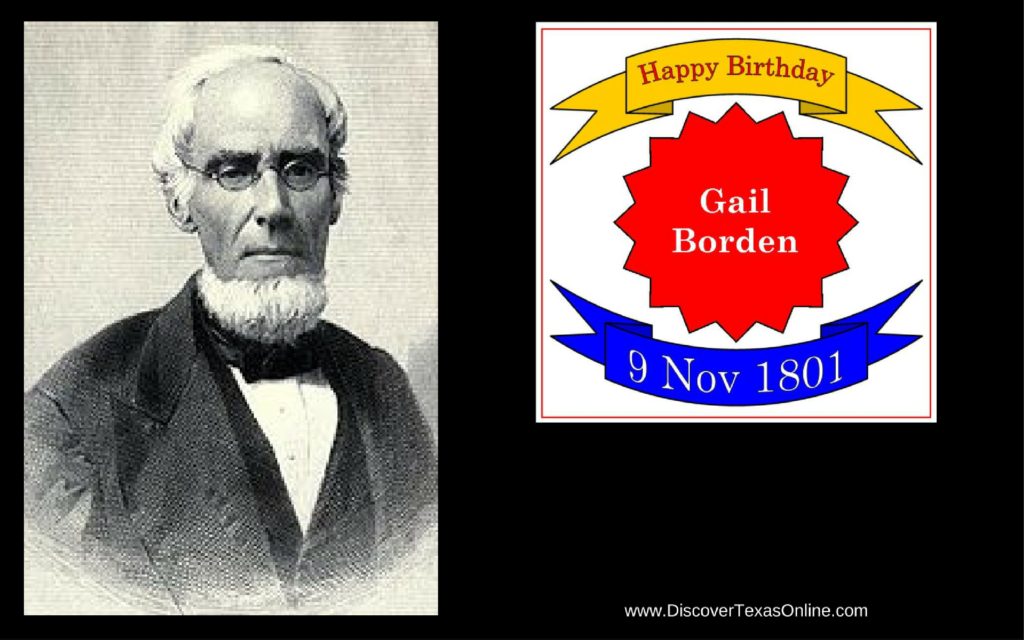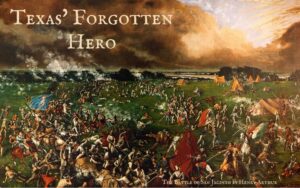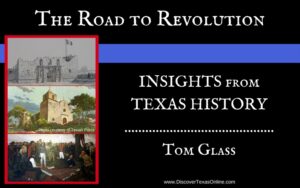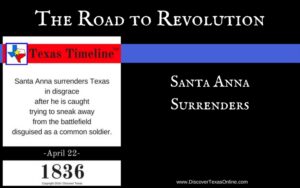Do you know what these three pictures have in common?
To answer that question, I have to tell you about this man–Gail Borden.
Gail Borden, the third to bear that name, was born in Norwich, New York on November 9, 1801. His family moved twice–first to Kentucky, and then to Indiana. Borden only went to a formal school for two years in Indiana (1816 and 1817) to learn how to survey land. Make no mistake, though. Gail Borden was a very smart man. His talents were varied, and he had a very curious and persistent mind.
When he was 20 or 21, Gail and his brother Thomas set out for New Orleans. Along the way, though, they passed through Mississippi and found it inviting. Gail worked as county surveyor in Amite County, Mississippi, and also taught school in Bates and Zion Hill. He had a reputation for running to school each morning instead of walking. Maybe, with three jobs, he got into the habit of living in a hurry! He wasn’t in too much of a hurry, though, to socialize a bit. In 1828 he married Penelope Mercer…and that same year, his mother died of yellow fever. (Remember that. It will be important later.)
The next year Gail took his family to Texas. By this time, his father and his brothers John and Thomas were there, too–among the original families of Stephen F. Austin’s colony in San Felipe. Gail and his wife and daughter arrived the year before the Mexican government shut down Anglo immigration from the United States. The political situation heated up rapidly after that, and Gail served as a delegate to the Convention of 1833 where he helped to write the Republic of Texas Constitution (the second image pictured above). While Stephen F. Austin was imprisoned in Mexico for asking the new Mexican government to take it a little easier on the Texas colonists, Gail Borden and Samuel M. Williams shared his administrative duties to keep the colony running during his absence.
In 1835, Gail also went into partnership with his brothers and a friend to publish the second newspaper in the state–the Telegraph and Texas Register. Their first issue came out the week after the Texas Revolution began, and the Gail brothers seemed to have knack for being in the thick of things, providing historians with a priceless collection of contemporary accounts of the birth of the Texas Republic.
As head of the Texas Land Office, Gail helped draw the first topographical map of Texas in 1835. In 1836 his father’s company hired him to survey a new town site at Galveston, then the Allen brothers hired him to survey another new town. The little town laid out along Buffalo Bayou was to be named after Texas’ most famous military general and president–Houston. (That’s a map of brand-new Houston up there in the picture–the first image.)
In 1837, Sam Houston appointed Gail Borden to be the Collector of Customs for the Republic of Texas at Galveston. This was a very important job, since the tariffs he collected made up half of the government’s income in those days. Even though he collected taxes, Gail was popular and well-liked.
Then in 1844, tragedy struck. Yellow fever–the same disease that took Gail’s mother–swept through the region, killing his wife Penelope and four-year-old son, Stephen Austin Borden, and leaving him with six children–the eldest a girl of 15, and the youngest an infant. Borden, who had always tinkered with ideas for inventions, began to experiment with ideas that might prevent or cure diseases. One of his ideas–a dried meat biscuit similar to jerky–won awards and an invitation to exhibit in London. On the return voyage, a disease infected the cows carried aboard ship, and several children who drank their contaminated milk also died. While Borden had learned much about preserving food in the development of his meat biscuit, his sales figures were discouraging. Instead he turned his interest to preserving milk and within three years received a patent for his process of condensing milk by vacuum and canning it. With the help of investors he founded the New York Condensed Milk Company in 1857. An 1861 contract to supply the Union Army made the company extremely profitable! Borden’s Condensed Milk and Eagle Brand Milk are a recognized brand to this day. (That explains the third image above.) Gail Borden used his money well, and became a beloved philanthropist, founding schools for both white and African-American students. His step-sons founded a public library in his name.
Borden County, Texas and its county seat, Gail, were named in honor of Gail Borden after his death.



